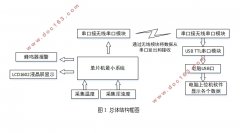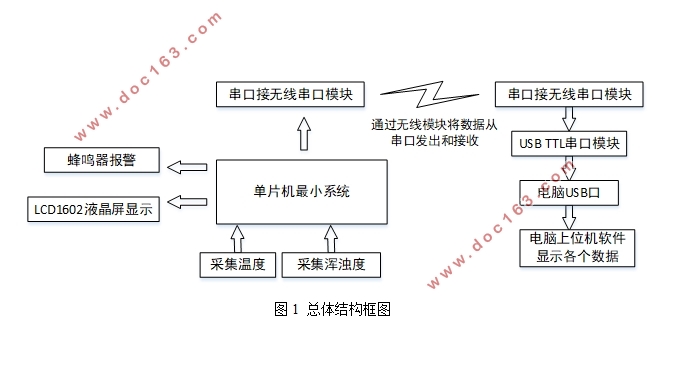智能泳池监控系统设计

1.无需注册登录,支付后按照提示操作即可获取该资料.
2.资料以网页介绍的为准,下载后不会有水印.资料仅供学习参考之用.
密 惠 保
智能泳池监控系统设计(论文14000字)
摘要:针对目前的泳池水质安全问题,设计出一种基于STC89C52单片机的无线泳池水质监控系统。该系统区别于传统的有线监控系统,采用HC-12无线串口透传进行泳池环境数据的无线传输,大大降低了搭建线路所需要的成本。 本系统由上位机和下位机两部分组成。上位机是基于VB语言在Microsoft Visual Basic开发平台上编写而成的;下位机包括数据采集模块、单片机控制模块、无线传输模块、电源模块、液晶显示模块以及报警模块。单片机将监测到的数据,通过无线串口方式,传给上位机,上位机上显示泳池水质的温度和浑浊度。
关键字:STC89C52;无线串口;VB;泳池;水质
Design of Intelligent Swimming Pool Monitoring System
Abstract:Aiming at the safety problem of the current swimming pool water quality, a wireless swimming pool water quality monitoring system based on STC89C52 microcontroller was designed. The system is different from the traditional wired monitoring system. HC-12 wireless serial port transparent transmission is used to transmit wireless data of the swimming pool environment, which greatly reduces the cost required to build the line. The system consists of two parts, the upper computer and the lower computer. The host computer is based on the VB language written on the Microsoft Visual Basic development platform; the lower computer includes a data acquisition module, a microcontroller control module, a wireless transmission module, a power supply module, a liquid crystal display module, and an alarm module. The data that the one-chip computer will monitor, through the wireless serial port way, passes on the upper computer, the upper computer shows the temperature and turbidity of the swimming pool water quality. [资料来源:THINK58.com]
Key words:STC89C52 ;Wireless serial port; VB; Swimming pool;Water quality
[资料来源:http://think58.com]

目 录
1绪论 1
1.1 研究背景 1
1.2 国内外发展现状 1
1.3 研究目的和意义 1
1.4 主要工作 2
2总体设计方案 2
2.1 系统需求分析 2
2.2 系统设计原理 3
2.3 系统设计方案 3
2.4 系统流程 4
2.5 本章小结 5
3系统硬件设计 5
3.1 系统硬件总体设计 5
3.2 采集模块设计 5
3.2.1 传感器的选择 6
3.3 单片机模块设计 8
3.3.1单片机最小系统 8
3.3.2 LCD液晶显示模块 10
3.3.3 报警电路 11
3.4 数据通信模块 11
3.5 本章小结 13
4系统软件设计 13
4.1 需求分析 13
4.1.1 用户需求 13
4.1.2 功能需求 13
4.2 系统软件总体设计 14
4.2.1 上位机开发环境 14
4.2.2 下位机程序编写 15
4.2.3 上位机程序编写 18
4.3 本章小结 21
5系统联调与测试 21
5.1 系统成品图 21
5.1.1 硬件成品图 21
5.1.2 软件成品图 22
5.2 系统联调 22
5.2.1 硬件联调 22
5.2.2 软件联调 23
5.3 系统测试 23
5.4 本章小结 26
6总结与展望 26
参考文献 27
致谢 28
